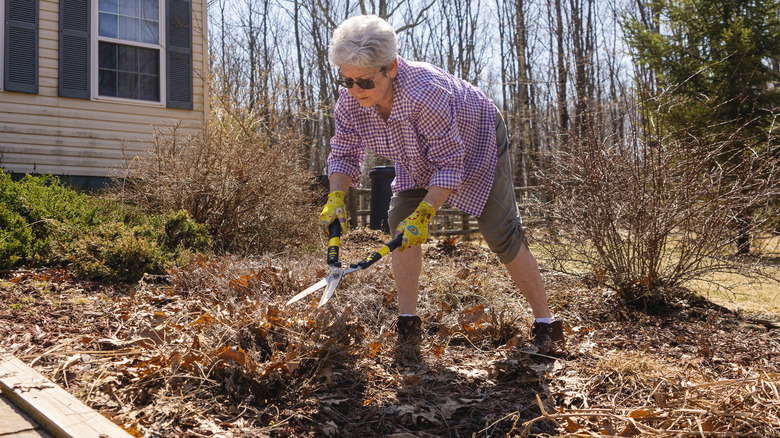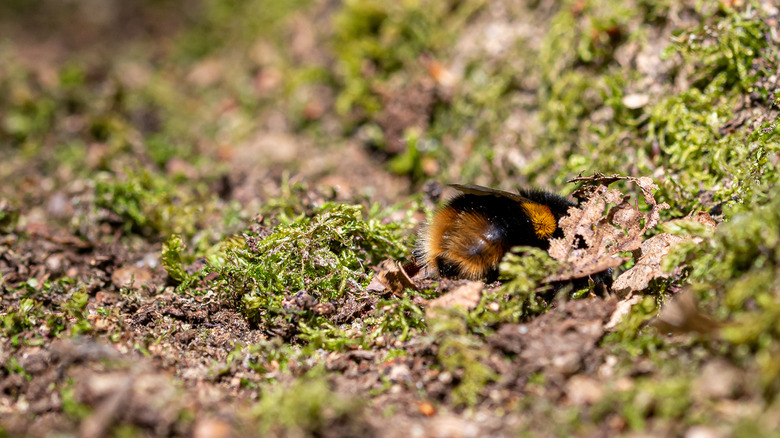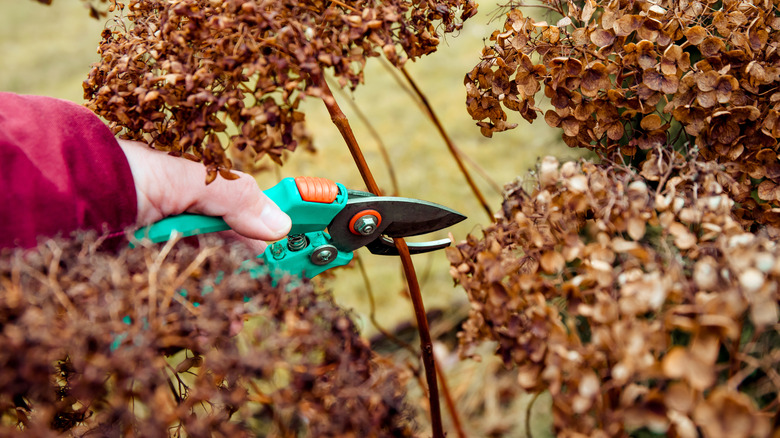The Best Time Of Year To Clean-Up Your Garden (Without Harming Beneficial Pollinators)
Melting snow ignites spring fever for anyone, but gardeners might get the worst of it. There's nothing quite like dusting off the garden gloves and clearing out flower beds as soon as there's a smidge of warmth in the air. But before you put on your work boots, take a minute to think about the critters, including beneficial pollinators like bees, who aren't ready to come out just yet. Tearing out their winter shelter too early could harm them. The best time to start your spring cleaning is when the temperature at night is above 50 degrees Fahrenheit for multiple nights, which should be around May in most of the United States.
However, you don't have to sit around until then to start your garden chores. You can still do plenty of things in the spring to prepare for the growing season while you wait for the bees and other insects to wake up. Some cleaning can help your local pollinators and the rest of your garden, but you'll need to handle it strategically. Further, you should always wait until spring to clean your garden instead of tidying it up in the fall to provide pollinators with a winter shelter.
Know when your garden residents wake up
Just as you snuggle under a blanket in the winter, many pollinators hunker down in dead garden matter. Some bees nest in stems, meaning they lay their eggs in them. The eggs hatch, and the larvae live their childhood in the stems until they emerge as adults. This process can take quite a while, so only trimming your plants every two years may be best. Some species are spring bees, while others won't be out of the stems until late summer or early fall. Waiting to cut back stems will benefit the spring bees, but you could also add a dedicated pollinator garden to your yard where you can leave stems up all year long for the fall bees.
Bees aren't the only pollinators in your garden, of course. Beetles, ladybugs, caterpillars, and fireflies hide in piles of leaf matter, under logs and rocks, and even in snail shells. Most native bees nest in the ground too, so piles of debris are important to keep around. There are a few ways you can know that it's time to bring the garden to life. A safe bet is to start cleaning up when it's time to transplant tomatoes since they need night temperatures to stay above 50 degrees Fahrenheit. If you grow fruit trees, you'll know it's time to start your chores when your pears and apples are done blooming. The lawn is another way to know, as tall grass usually means it's safe.
How to safely start gardening early
If your green thumb is itching to get some work done, there are a few ways you can go about it without disturbing beneficial pollinators. Choose a spot in your yard to put debris as you clean it from flower beds. This will allow pollinators to have some leaves available to continue nesting in. As you prune plants or cut back stems, do it carefully and place the stems in your debris area. The bees inside will stay there and will remain safe until they're ready to emerge, provided that you don't mow over this location. Try to keep your pile in undisturbed areas like behind a shed or in a bed you know you won't use until later in the season.
If you have no choice but to work the ground early, try not to dig deeper than 6 inches, as this is how deep most ground bees are. You're less likely to disturb or harm ground bees by keeping it shallow. However, you'll need to watch out for other insects since they all have different ways of hiding from the cold. If you find where a bee is hiding out, you could mark the area with a vertical stick to remind you not to disturb the space.


